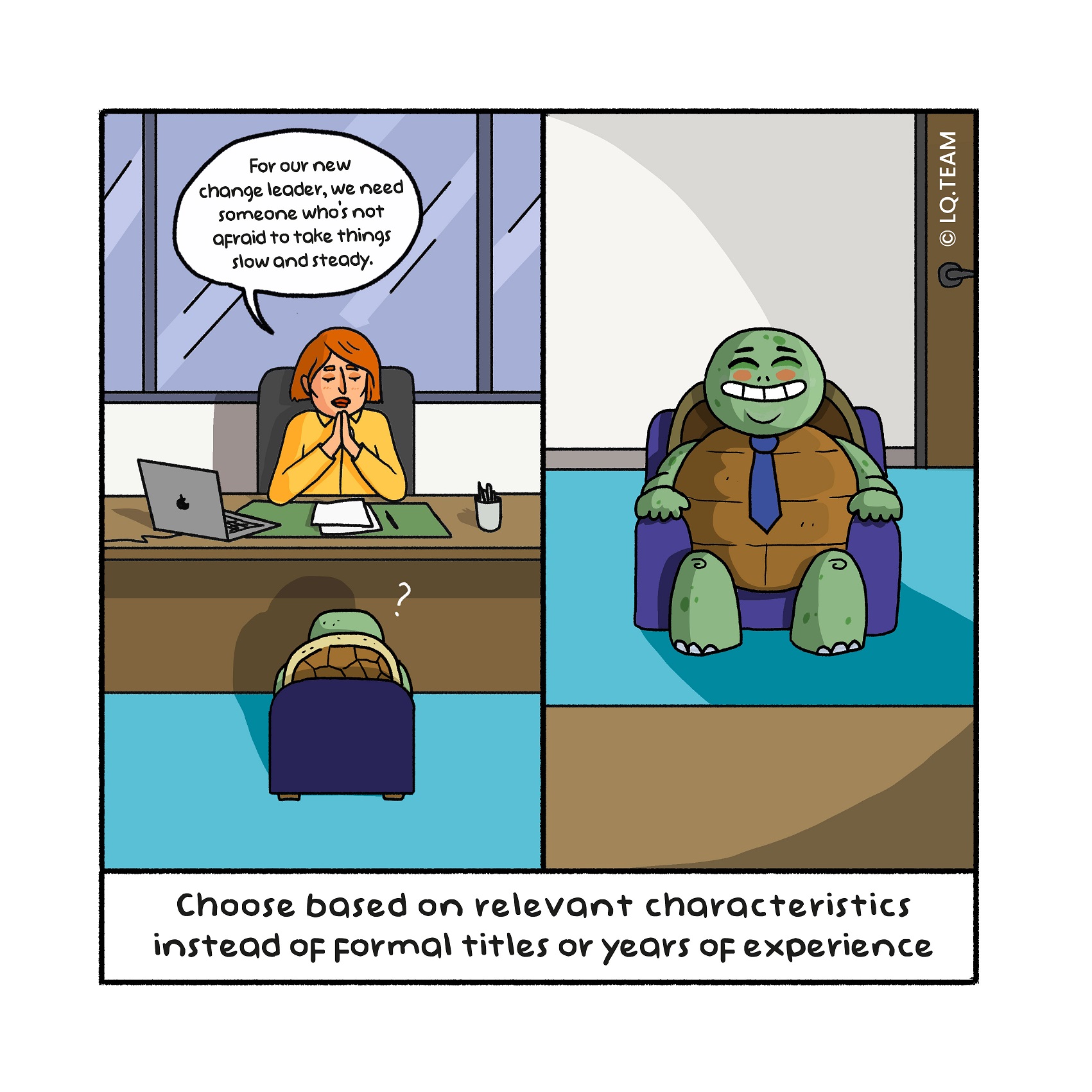
Nut to crack: Who should you put on the core team?
To whom do you give the authority to lead the change? Who do you trust? Which people have the best track record and relevant knowledge and expe- rience? Who has the proper mindset? Who is a role model? Who do you place together? These are often tough questions to answer. It is the person who can do everything that you are looking for, and they are already overly deployed. And were you to take them off other assignments, it would typically be risky. So how do you choose? And who do you opt for in the end?
Nutcracker: Dare to choose
The team you create symbolises the change. Therefore, select talent over se- niority, and attitude and behaviour over knowledge. Choose authenticity and a balanced personality. And select based on necessary experience; not the number of years of experience in managing or supervising change in general, but in what type of change processes, with what nature, complexity and scale someone has contributed, and in what role. The support tool helps with the selection process. The practical example illustrates how you can limit the risk of loss of seniority to give talent space.
Support tool: the minimum requirements for change leaders and enablers
You can use the model below to select the leaders and enablers of change.8 This model lists the requisite characteristics for any change leader or enabler. Research has shown that it is tough to develop these characteristics, so they must already be present in the individual. Score each of these factors with red, orange and green, whereby more than one orange or red score indicates a mismatch.
If individuals score green on the above hygiene factors, then look at the other selection criteria connected to the magnitude of the change, as described in Challenge 9. In other words, if you require an incremental change, you will achieve it “using” people with years of relevant work experience in this do- main and good project management skills.
If you require a medium change, you need leaders and enablers who have previously led cross-functional changes, where they had to turn multiple or- ganisational design dials simultaneously. These individuals must have exten- sive change management knowledge, organisational design knowledge and programme management experience.
Finally, if you require a huge change, you typically ask individuals who are already acting at the board level and are used to leading the development of several business units concurrently. Next, look at the track record of critical experiences thoroughly; what scale, complexity and impact of change have they previously led or enabled, and with what level of success?
Real-life example: Make room for talent
A telecoms organisation is in a crisis. The ceo wants to intervene by changing the com position of his team. He wants to say goodbye to two “icons” with mediocre performan ces and bring in some new blood. He has two high potentials in the picture, but they still have modest experience. How can he provide space to these talents without running the risk of damaging the organisation?
The ceo appoints the two high potentials for the positions. In the first year, he manages tasks with the highest strategic impact and risk, including communications with the shareholders and significant investment decisions himself. Behind the scenes, he guides the two talents intensively, but for the outside world, the talents are the face. This way, he gives them the space to grow in their role and the confidence for himself to be able to select them now.
Tip for change leader
Look in the mirror. Are you the right person for the job at hand? Do your behaviours and choices match the change you intend to achieve? Are you indeed role modelling? Read more about this in Challenge 39.
Tip for change enabler
The support tool is suitable for supporting selection decisions. You can use instruments like the MyersBriggs Type Indicator (mbti) or Insights after the selection process to steer towards mutual understanding, effective operations and the development of the change team.
Kernel: Show that you mean business
Be selective and dare to choose for talent. Choose relevant experience over the length of service. The choice of change leaders symbolises what the change ought to represent.
